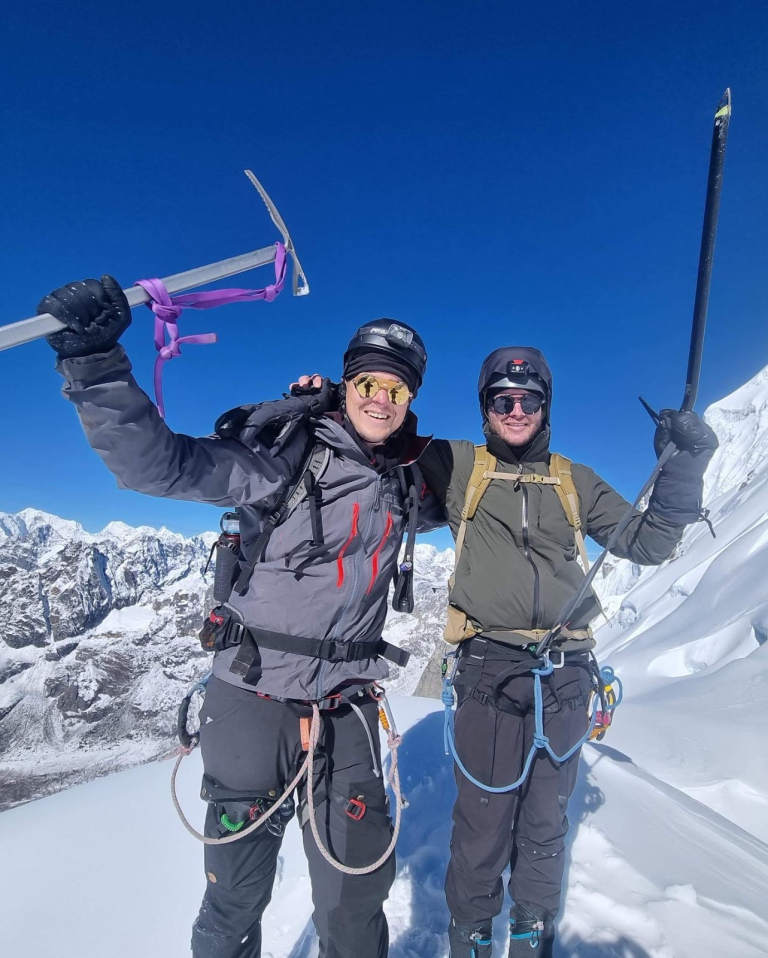The mighty Himalayas of Nepal attract thousands of climbers every year, ranging from first-time mountaineers to seasoned alpinists. While summiting the 8,000-meter giants like Everest may be the ultimate goal for some, Nepal offers a range of challenging and rewarding trekking peaks that are far more accessible yet equally awe-inspiring. Among the top choices for adventurers are Lobuche Peak Climbing, Mera Peak Climbing, and Island Peak Climbing. These three peaks provide not only diverse technical challenges but also unforgettable Himalayan panoramas and cultural experiences.
Lobuche Peak Climbing: A Technical Marvel Near Everest
Lobuche East Peak rises to 6,119 meters (20,075 feet) and lies close to the classic Everest Base Camp trail. Unlike many trekking peaks, Lobuche presents a relatively technical climbing experience, making it ideal for those seeking to sharpen their alpine skills.
Why Climb Lobuche Peak?
- Technical Training Ground: Lobuche East is known for its steep ascents, fixed ropes, and mixed terrain, including rock, ice, and snow. It’s a suitable climb for those with basic mountaineering knowledge who want to level up.
- Proximity to Everest: The climb can be seamlessly combined with the Everest Base Camp trek, allowing climbers to experience one of the world’s most iconic trails while preparing for summit day.
- Epic Views: From the top, climbers are rewarded with panoramic views of Everest, Nuptse, Lhotse, Pumori, and Ama Dablam.
Route Overview
The journey typically begins with a flight to Lukla, followed by a trek through Namche Bazaar, Tengboche, and Dingboche. From Lobuche village, climbers head toward Lobuche Base Camp, where they acclimate and train. The summit climb involves glacier crossings, rope sections, and steep inclines—requiring focus and endurance.
Mera Peak Climbing: Nepal’s Highest Trekking Peak
Mera Peak Climbing, standing at 6,476 meters (21,247 feet), is Nepal’s highest officially classified trekking peak. Located in the Hinku Valley of the Everest region, Mera is ideal for climbers looking for high-altitude exposure without complex technical climbing.
Highlights of Mera Peak
- Unmatched Panoramic Views: The summit offers one of the most stunning viewpoints in Nepal, with a 360-degree panorama of Everest, Lhotse, Makalu, Cho Oyu, and even distant Kanchenjunga.
- Moderate Technicality: While Mera Peak doesn’t require advanced technical skills, climbers will need to navigate glaciated terrain and use basic mountaineering gear such as crampons, ropes, and ice axes.
- Remote Adventure: The trail to Mera is less crowded than the Everest region, providing a more authentic Himalayan experience through remote villages and pristine forests.
Route and Experience
The standard route begins with a flight to Lukla, followed by a trek through remote villages like Paiya, Panggom, and Khare. After setting up Mera Base Camp, climbers acclimatize and practice glacier travel. Summit day involves crossing snowfields and a gradual ascent, culminating in an exhilarating push to the top before descending the same way.
Island Peak Climbing: A Classic Himalayan Challenge
Known locally as Imja Tse, Island Peak is a favorite among beginner and intermediate climbers. It rises to 6,189 meters (20,305 feet) and is located in the heart of the Khumbu region, not far from Everest Base Camp.
What Makes Island Peak Special?
- Stepping Stone for Everest: Many climbers use Island Peak as a training climb for Everest due to its technical features and proximity to the higher ranges.
- Glacier and Ice Wall Climbing: Island Peak involves traversing glaciers, ladders over crevasses, and a final 100-meter headwall climb—making it more technical than Mera but accessible for well-prepared beginners.
- Historic Route: First climbed in 1953 by members of the British Everest Expedition, Island Peak is steeped in mountaineering history.
Trekking and Climbing Route
The journey follows the classic Everest Base Camp trail up to Dingboche, from where the trail veers east toward Chhukung and Island Peak Base Camp. The summit climb starts before dawn, navigating crevassed glaciers and ascending a steep ice wall via fixed ropes. Despite its relative popularity, Island Peak is no easy feat and demands solid physical fitness and acclimatization.
Comparison of the Three PeaksPreparing for Peak Climbing in Nepal
Whether you’re climbing Lobuche, Mera, or Island Peak, thorough preparation is key:
- Physical Fitness: Cardiovascular endurance, strength, and stamina are essential. Regular hiking and altitude training are highly recommended.
- Technical Skills: Familiarity with gear like harnesses, crampons, and ice axes is critical—especially for Lobuche and Island Peak.
- Acclimatization: All three peaks require proper altitude adjustment to prevent acute mountain sickness.
- Guides and Permits: Nepal mandates that all peak climbers use licensed guides and acquire climbing permits from the Nepal Mountaineering Association (NMA).
Best Time to Climb
The most favorable seasons for these climbs are:
- Spring (March to May): Mild weather, blooming rhododendrons, and stable climbing conditions.
- Autumn (September to November): Clear skies, ideal temperatures, and post-monsoon freshness.
Avoid winter and monsoon seasons, as extreme cold or heavy rains make climbing unsafe and trails inaccessible.
Conclusion: Which Peak is Right for You?
Nepal’s trekking peaks offer a rich blend of natural beauty, cultural immersion, and physical challenge. Lobuche Peak Climbing is perfect for those seeking a technically demanding ascent near the Everest trail. Mera Peak Climbing is ideal for adventurers looking for high-altitude experience with minimal technical barriers and maximum scenic rewards. Meanwhile, Island Peak Climbing provides the perfect bridge between trekking and mountaineering, offering glacier travel and moderate technical features in a classic alpine setting.
Whichever peak you choose, the experience will be transformative—both physically and spiritually. With careful preparation, the right guidance, and a spirit of adventure, the Himalayas are ready to welcome you to one of the greatest mountaineering experiences on Earth.
Contact Details
———————
Company address: Everest Trekking Routes Pvt. Ltd.
16 Khumbu, Nayabazaar, Kathmandu, Nepal
Mobile : +977-9843467921 (Rabin)
Email: [email protected]
URL:- www.everesttrekkingroutes.com


